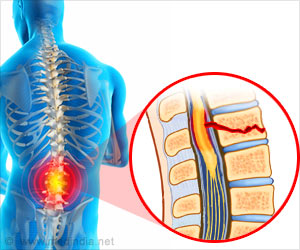Spinal cord is also able to process and control more complex functions, like the positioning of the hand in external space, said researchers.

‘Spinal cord also processes and controls more complex functions, like the positioning of the hand in external space, said researchers. ’





"This research has shown that a least one important function is being done at the level of the spinal cord and it opens up a whole new area of investigation to say, 'what else is done at the spinal level and what else have we potentially missed in this domain?'" said the study's senior and supervising researcher Andrew Pruszynski, PhD, assistant professor at Western's Schulich School of Medicine & Dentistry and Canada Research Chair in Sensorimotor Neuroscience. The study, "Spinal stretch reflexes support efficient hand control," will be published online in the high impact journal Nature Neuroscience. (LINK to follow)
This kind of hand control requires sensory inputs from multiple joints - mainly the elbow and the wrist - and these inputs was previously thought to be processed and converted into motor commands by the brain's cerebral cortex.
Using specialized robotic technology, a three degree of freedom exoskeleton at Western's Brain and Mind Institute, subjects were asked to maintain their hand in a target position and then the robot bumped it away from the target by simultaneously flexing or extending the wrist and elbow. The researchers measured the time that it took for the muscles in the elbow and wrist to respond to the bump from the robot and whether these responses helped bring the hand back to the initial target.
By measuring the latency, or 'lag', in the response, they were able to determine whether the processing was happening in the brain or the spinal cord.
Advertisement
This response generated by the spinal cord is called a 'stretch reflex,' and has previously been thought to be very limited in terms of how it helps movement. "Historically it was believed that these spinal reflexes just act to restore the length of the muscle to whatever happened before the stretch occurred," said Pruszynski.
Advertisement
"A fundamental understanding of the neurocircuits is critical for making any kind of progress on rehabilitation front," said Pruszynski who is also a scientist at Western's Robarts Research Institute and the Brain and Mind Institute. "Here we can see how this knowledge could lead to different kinds of training regimens that focus on the spinal circuitry."
Source-Eurekalert








